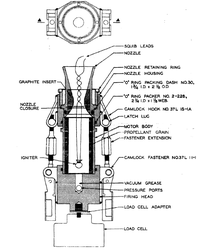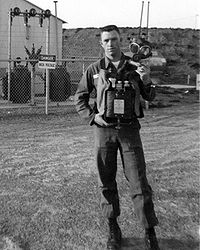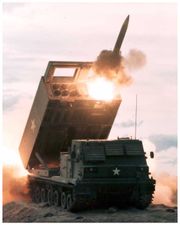
Byron Lavoy Cockrell
Encyclopedia

Early life
Byron Cockrell was born on July 3, 1935 to Webster and Willa Cockrell of Lineville, AlabamaLineville, Alabama
Lineville is a city in Clay County, Alabama, United States. At the 2000 census the population was 2,401.-History:Native Americans were the first to inhabit the area now known as Lineville. The Creek Indian War of 1813, however, resulted in their removal. The first white settlers in the area were...
. He was one of four children and grew up in Clay County, Alabama
Clay County, Alabama
Clay County is a county of the US state of Alabama. Its name is in honor of Henry Clay, famous American statesman, member of the United States Senate from Kentucky and United States Secretary of State in the 19th century. As of 2010 the population was 13,932...
. He attended Clay County High School and later earned a degree in Aeronautical Engineering from Auburn University
Auburn University
Auburn University is a public university located in Auburn, Alabama, United States. With more than 25,000 students and 1,200 faculty members, it is one of the largest universities in the state. Auburn was chartered on February 7, 1856, as the East Alabama Male College, a private liberal arts...
.
In 1957, he married Hazel Goodman of Lineville, Alabama
Lineville, Alabama
Lineville is a city in Clay County, Alabama, United States. At the 2000 census the population was 2,401.-History:Native Americans were the first to inhabit the area now known as Lineville. The Creek Indian War of 1813, however, resulted in their removal. The first white settlers in the area were...
. They eventually had four children, daughters, Julie and Gwendolyn, and sons, Jeffrey and Bruce.
Career

Alabama
Alabama is a state located in the southeastern region of the United States. It is bordered by Tennessee to the north, Georgia to the east, Florida and the Gulf of Mexico to the south, and Mississippi to the west. Alabama ranks 30th in total land area and ranks second in the size of its inland...
, Utah
Utah
Utah is a state in the Western United States. It was the 45th state to join the Union, on January 4, 1896. Approximately 80% of Utah's 2,763,885 people live along the Wasatch Front, centering on Salt Lake City. This leaves vast expanses of the state nearly uninhabited, making the population the...
, Texas
Texas
Texas is the second largest U.S. state by both area and population, and the largest state by area in the contiguous United States.The name, based on the Caddo word "Tejas" meaning "friends" or "allies", was applied by the Spanish to the Caddo themselves and to the region of their settlement in...
, and Virginia
Virginia
The Commonwealth of Virginia , is a U.S. state on the Atlantic Coast of the Southern United States. Virginia is nicknamed the "Old Dominion" and sometimes the "Mother of Presidents" after the eight U.S. presidents born there...
.
Redstone Arsenal, Alabama

Rohm and Haas
Rohm and Haas Company, a Philadelphia, Pennsylvania based company, manufactures miscellaneous materials. Formerly a Fortune 500 Company, Rohm and Haas employs more than 17,000 people in 27 countries, with its last sales revenue reported as an independent company at USD 8.9 billion. On July 10,...
signed a contract with the U.S. Army Missile Command near Redstone Arsenal to do research and development work on rockets and jet propulsion. After graduating from Auburn University
Auburn University
Auburn University is a public university located in Auburn, Alabama, United States. With more than 25,000 students and 1,200 faculty members, it is one of the largest universities in the state. Auburn was chartered on February 7, 1856, as the East Alabama Male College, a private liberal arts...
, Cockrell began his career in Redstone Arsenal's Research Division. Cockrell and other staff often served as consultants to the Army Laboratories and other companies. They contributed to many programs including Polaris, Poseidon , Pershing
Pershing missile
Pershing was a family of solid-fueled two-stage medium-range ballistic missiles designed and built by Martin Marietta to replace the PGM-11 Redstone missile as the United States Army's primary nuclear-capable theater-level weapon. The Pershing systems lasted over 30 years from the first test...
, and Minuteman
LGM-30 Minuteman
The LGM-30 Minuteman is a U.S. nuclear missile, a land-based intercontinental ballistic missile . As of 2010, the version LGM-30G Minuteman-III is the only land-based ICBM in service in the United States...
.
Cockrell focused on reducing motor sizes to accommodate the trend in propellant research. Several factors drove this trend to include:
- Many researchers had an upper restriction on propellant quantity
- Increasing toxicity and/or sensitivity of new formulations
- Limited availability or cost of novel propellant ingredients
Before the new, smaller motors could even be built, Cockrell and team had to completely redesign the motor hardware to allow them to be remotely fired. These innovative, new motor designs also had to consider the stress on the hardware especially since it was going be evaluating very hazardous materials. Due to the hazardous nature of the propellants, Cockrell had to design casting equipment and facilities that could be operated remotely. These included two facilities to handle up 250 grams and one to handle up to 2 pounds of propellant; both of which had closed-circuit television cameras to provide close-up views of the equipment and controls.
Cockrell's research also showed that rocket efficiency could be scaled when corrections were made for heat-loss and two-phase-flow effects. These scaling factors could be used to accurately predict the specific impulse of the propellant in any other untested motor configuration. The specific impulse is the most important metric for the efficiency of a rocket engine. This metric is defined as impulse per unit of propellant and is either measured as a speed (
 in meters/second or ft/s) or as a time (seconds).
in meters/second or ft/s) or as a time (seconds).Vought Systems Division, Dallas, Texas
In 1972, Vought Aeronautics and Vought Missiles and Space were combined into Vought SystemsVought
Vought is the name of several related aerospace firms. These have included, in the past, Lewis and Vought Corporation, Chance Vought, Vought Sikorsky, LTV Aerospace , Vought Aircraft Companies, and the current Vought Aircraft Industries. The first incarnation of Vought was established by Chance M...
. While working for Vought Systems in Texas, Cockrell conducted design and analysis to define a detailed configuration capable of meeting the stringent performance, structural, and mass properties requirements set forth in their new government contract. Cockrell and team delivered 25 successful heavywall motor tests, and 31 successful flight motor tests. The work culminated in the fabrication of a complete prototype.

Scout (rocket)
The Scout family of rockets were launch vehicles designed to place small satellites into orbit around the Earth. The Scout multistage rocket was the first orbital launch vehicle to be entirely composed of solid fuel stages....
launch vehicle which were to place small satellites into orbit around the Earth. Scout, an acronym for Solid Controlled Orbital Utility Test system, was a four-stage solid fuel satellite system capable of launching a 385-pound satellite into a 500-mile orbit. Since 1976, its launch success rate was 100 percent and included 23 satellites launched for the international space organizations.
Much of his work in Texas remains classified. However, because of his expertise and time frame; Cockrell was more than likely involved in the Army's Multiple Launch Rocket System (MLRS) program. Vought was awarded a contract to conduct design and trade-off analysis and system optimization of the MLRS in 1976. One year later, the MLRS design was complete and production began in 1980.
Atlantic Research Corporation, Virginia
While working for Atlantic Research Corporation (now AerojetAerojet
Aerojet is an American rocket and missile propulsion manufacturer based primarily in Rancho Cordova, California with divisions in Redmond, Washington, Orange, Gainesville and Camden, Arkansas. Aerojet is owned by GenCorp. They are the only US propulsion company that provides both solid rocket...
) in Virginia, Cockrell served as a program director. His leadership, experience, and expertise served several programs well to include the Minuteman program. During this time, he was recognized as an Associate Fellow by the esteemed American Institute of Aeronautics and Astronautics
American Institute of Aeronautics and Astronautics
The American Institute of Aeronautics and Astronautics is the professional society for the field of aerospace engineering. The AIAA was founded in 1963 from the merger of two earlier societies: the American Rocket Society , founded in 1930 as the American Interplanetary Society , and the Institute...
(AIAA). According to Article III 3.2, of the AIAA's Constitution:
Personal life
Despite his stressful schedule and according to his sons, he always made time to spend with his family to include vacations and outings. According to his sons, he enjoyed being part of their projects but insisted on incorporating technology to gain a competitive edge. One such instance involved the use graphiteGraphite
The mineral graphite is one of the allotropes of carbon. It was named by Abraham Gottlob Werner in 1789 from the Ancient Greek γράφω , "to draw/write", for its use in pencils, where it is commonly called lead . Unlike diamond , graphite is an electrical conductor, a semimetal...
and advanced aerodynamic concepts in a soap box derby
Soap Box Derby
The Soap Box Derby is a youth soapbox car racing program which has been run in the United States since 1934. World Championship finals are held each July at Derby Downs in Akron, Ohio...
, which of course were beyond the abilities of the other children and their parents.
After retirement, he remained in Virginia where he spent time with his children, three grandsons and six granddaughters. In 2006, his wife Hazel died and a year later his mother Willa (93) died after being married to his father for 65 years.
An accomplished engineer and patriarch, Byron Cockrell died later that year.

